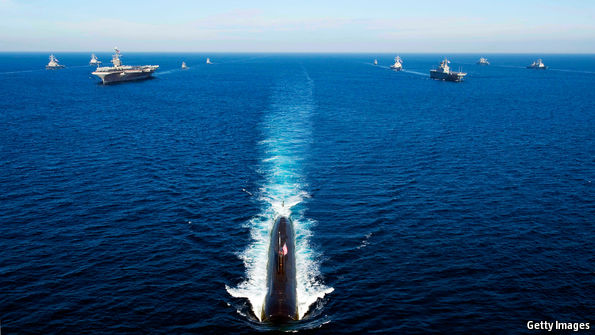Hunting submarines with magnets

SUBMARINES rely on stealth to do their jobs, whether that is sinking enemy ships or hiding nuclear-tipped missiles beneath the ocean. The traditional way of hunting them is with sonar. Modern sonar is extremely sensitive. But modern submarines are very quiet, and neither side has gained a definitive upper hand.
There are other options. Submarine-spotting aircraft carry “magnetic anomaly detectors” (MAD) which pick up disturbances in the Earth’s magnetic field caused by a submarine’s metal hull. Those disturbances are tiny, which means MAD is only useful at ranges of a few hundred metres.
There may, though, be a better way. Thanks to something called the Debye effect, it might be possible to hunt submarines using the magnetic signatures of their wakes. Seawater is salty, full of ions of sodium and chlorine. Because those ions have different masses, any nudge—such as a passing submarine—moves some farther than others. Each ion carries an electric charge, and the movement of those charges produces a magnetic field.
The Debye effect has been known since 1933, but its effects were thought to be tiny. The American navy set…Continue reading
Source: Economist




